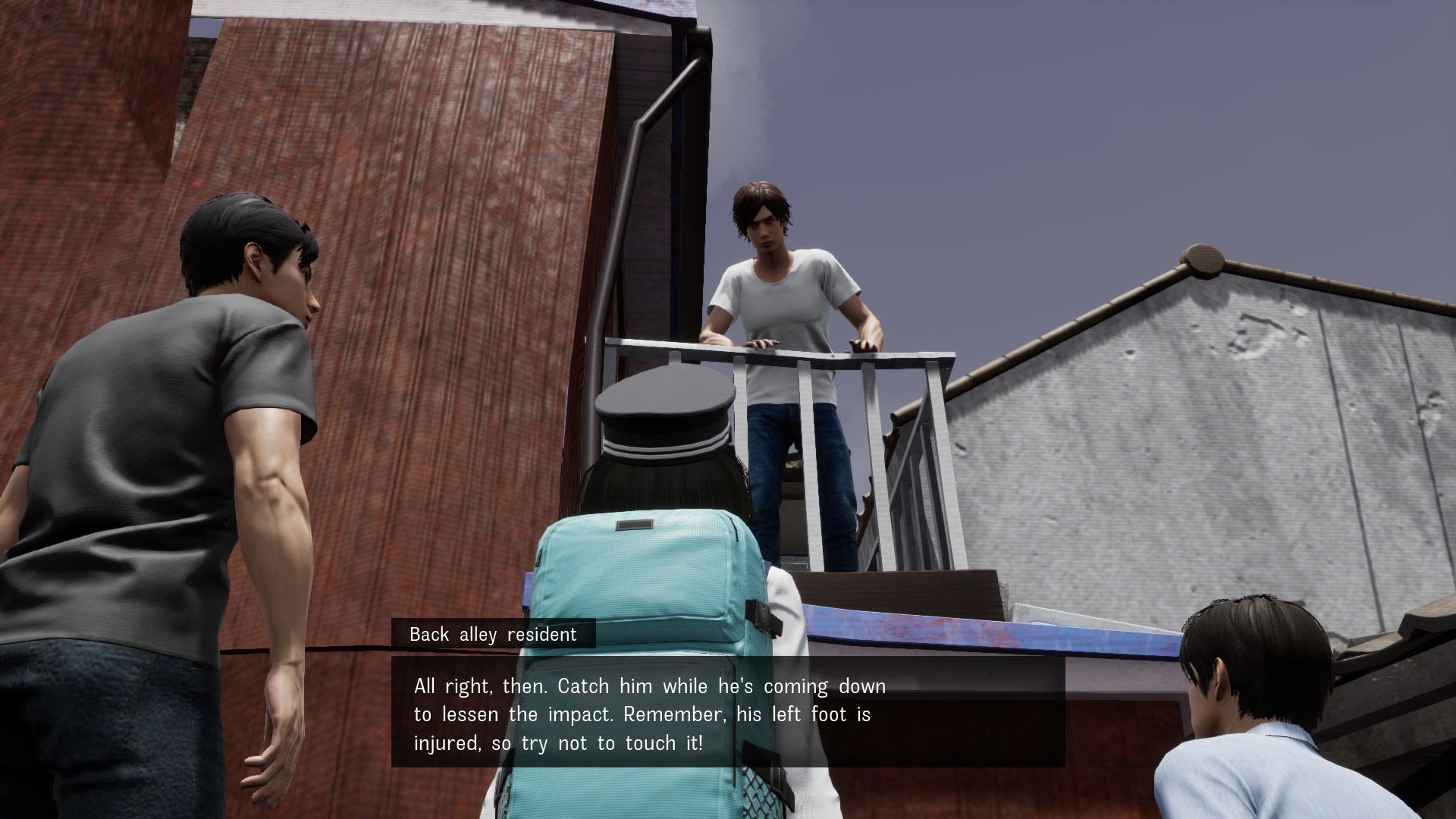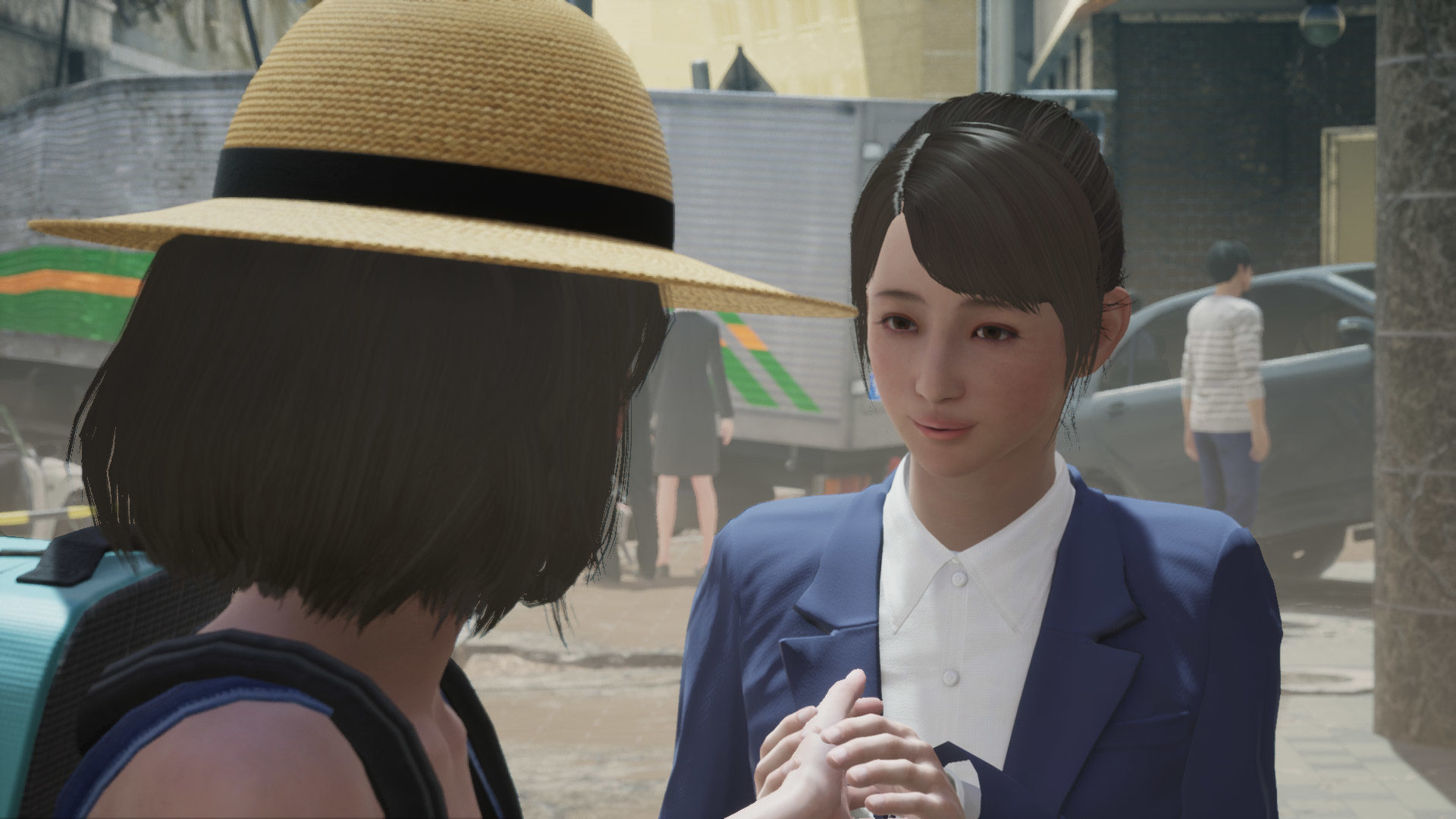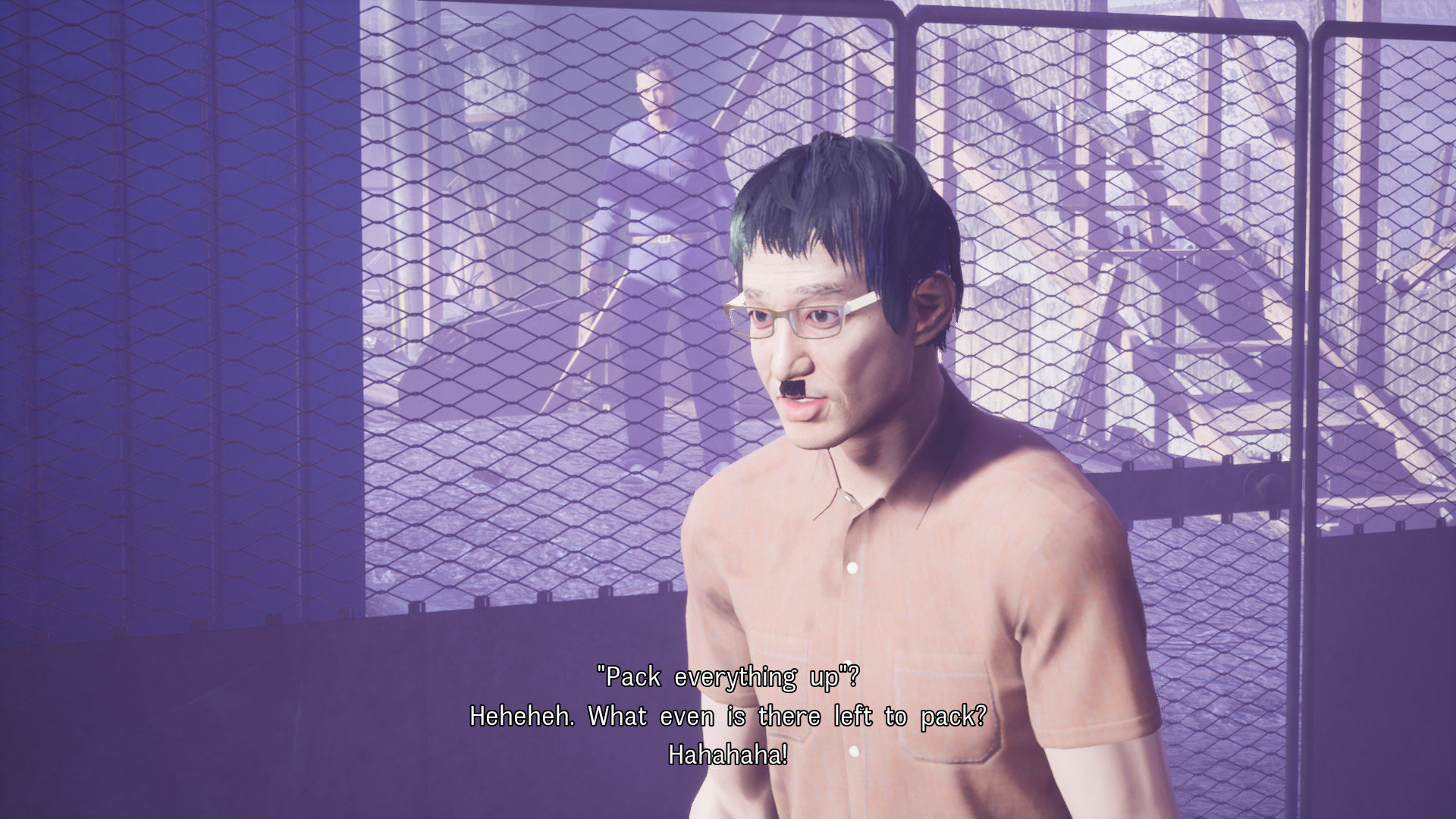With everything going on in the world right now that can make us feel lost and hopeless, it’s important for each and every one of us to remember the good things in our lives—even if those things may seem trivial in the bigger picture.
In my case, one good thing I can say about 2020 is that it’s given me the two games I’ve spent the most time waiting for in my entire life. Earlier in the year, I finally got to play an official English release of Phantasy Star Online 2, something I’ve been longing for since it first launched in Japan nearly eight years ago. And now, with its American release mere days away, the nine years I’d spent hoping that Disaster Report 4: Summer Memories would see the light of day have now come to an end.

Those of us who have been waiting for the game are, admittedly, a rather small bunch. When the first chapter of the Zettai Zetsumei Toshi series came west as Disaster Report (or SOS: The Final Escape in Europe) in 2003, the game—and later the entire series—gained a cult following. Disaster Report gave us a type of experience we rarely see even to this day: an adventure based on surviving a natural disaster that doesn’t then break down into a tale of aliens, zombies, or other fantastical elements. More disastrous to the series than its earthquakes or floods, though, have been levels of technical and gameplay quality that I could only describe as “jank.” Constantly fluctuating framerates, stiff controls, unpolished core concepts, and obscure campaign objectives have kept a lot of players away from the projects Kazuma Kujo and his team have offered the world. For those who could get past all of those flaws and appreciate the journeys on a deeper level, experiencing the uniqueness of what was being offered compared to most other adventure games on the market was worth the suffering.
What I want to make very clear is that, progressing past the PlayStation 2 and PSP and onto far more powerful platforms (the PS4 and Switch) and a more modern game engine (Unreal Engine 4) has fixed none of this. Disaster Report 4 is still quite a mess, and even where things have improved, I don’t think it’s enough to win over a significant number of new players. Yet, it remains an endearing mess. The game’s technical roughness didn’t adversely affect my enjoyment most of the time, outside of a couple areas where the framerate, already usually sub-30, dropped to nauseating levels. I don’t know if Disaster Report would still be Disaster Report if its gameplay was smooth and framerate silky, and even if I really should knock the game for its lack of polish, I just can’t bring myself to.
In part, perhaps, because there’s already more than enough to knock it for.

The first hour or so of Disaster Report 4 was fascinating to me as a long-time fan, as it was something the other games have never been: boring. Now, I don’t mean that in a “fun factor” way, but in a storytelling one. Whether it was the rumbling earth of Disaster Report or the torrential rains of Raw Danger, previous chapters felt like Hollywood action movies, as your avatar’s life is routinely in danger and increasingly dramatic situations constantly unfolded. Here, after the bus my character was riding on crashed due to the earthquake, the aftermath was pretty mundane. As I explored the section of the city I’d become stranded in, I talked to a couple wondering what to do next, an older businessman who had dropped his lunch, and a teacher trying to find her students. (In ways both big and small, Disaster Report 4 lets you make decisions on who you talk to or what actions you take while progressing through the story, which can then change how later events transpire from player to player.) While aftershocks did occur, they were often inconsequential, except for when used to direct me where to go next.
Disaster Report 4 is a major shift in focus for the team at Granzella, away from that “surviving an action movie” style to one that instead takes a more grounded look at how we humans cope in the wake of disaster. As much as I loved the previous games, as someone who’s now older and more aware of how much I could lose in the blink of an eye, I was all in on this more mature twist to the series. In the early going, characters and plot points never reached their full potential, but I was still enjoying the game and hopeful for how it would develop.
About halfway through, things started to go very wrong. Up until that point, there had been random examples of the trademark wackiness of past Disaster Reports showing up here and there, and while they clashed with the more down-to-earth tone of other parts of the game, they didn’t ruin the overall experience. When Disaster Report 4’ later plot points start kicking in, however—oh boy. Some of what happened to or around my character felt soap opera-level or worse, at times dragging the narrative down so low that I was left both embarrassed and furious. In addition to that, the game ends up sticking you with an NPC who sidelines your goal of getting out of the city, all so you can reunite her with her fiancé. The problem is, if you don’t come to have some sort of emotional attachment to her—which I didn’t—then she’s a total annoyance whose only real contribution is negating every bit of progress you’ve made by dragging you back to the beginning area. That’s an issue a lot of the game has, in fact: asking you to invest in characters who have nothing to offer you but demands, setbacks, or suffering.

What’s funny is that the one relationship with a survivor that I came to genuinely care about—an office lady named Yayoi—unfolded due to a shortcut taken by the dev team. When starting up Disaster Report 4, you’re given the option to pick the gender and basic looks of your character, but it’s clear that Granzella crafted the entire game around you playing a guy. Numerous women I ran into through my journey provided me conversation options to flirt with them, and Yayoi was romanceable (to the degree the game offers “romance”) even though I was a woman. Meanwhile, I never found a single man I could show interest in, or even flirt with. While I’d like to think the surprisingly touching way things played out between Yayoi and my heroine came from Granzella being progressive, the truth is much more mundane.
If some utterly awful storylines were the worst of Disaster Report 4’s weaknesses, I could still have come out of playing it with a positive opinion. Yet more than its failings on technical, gameplay, or storytelling levels, the game lacks the one thing it needed most: catharsis. There’s a death that occurs that was one of the most emotionally horrific I’ve experienced in a video game in recent memory, and yet it’s brushed aside after a singular “choose your response” dialog box. When other characters both familiar and foreign befall tragedy, similar detachment awaits. A makeshift funeral for a group of children who had perished in a fire, for instance, is ruined by an act of cartoonish villainy.
Throughout my other encounters with awful people taking advantage of the disaster, I was never given any satisfying resolution—not even the chance to simply tell them off. While I legitimately believed in Granzella’s desire to explore the more human side of a disaster, rather than the disaster itself, the result is an experience that is lacking in humanity, one that so often leaves you emotionally vacant.

Finally, where as the first two Disaster Report games were heavily built around the idea of managing your resources and body conditions—such as being too wet and/or cold for too long in Raw Danger—Disaster Report 4 seems to forget about those core mechanics much of the time. In theory, you need to manager your hunger, thirst, and bathroom usage; in practice, you’ll probably rarely remember to check those stats, except for the long stretch early on where the game refuses to let you find any food. In fact, it wasn’t until later in the game that I realized that there was another status effect in the game that I’d never seen before: being wet. It was applied to my character for a short time after a particular event, went away without any fanfare, and then I never saw it again. Like a lot of other aspects to the game, Disaster Report 4’s status management feels like an idea that was implemented and then just never fleshed out or finished.
In my time here at EGM, this is probably the hardest review I’ve ever had to do—because I so desperately wanted to like Disaster Report 4: Summer Memories. Even if their work will (assumedly) always be lacking in both programming prowess and budget, I want Kazuma Kujo and his team at Granzella to continue to be able to make Disaster Report games, because to me, the world would be less enjoyable without them. I’m thankful that, after nine years, the game now exists—in English no less—and that it wasn’t just lost to time. And, as a fan, I’m glad that I got to play another game featuring more of those moments of quirky brilliance that I fell in love with so many years ago. However, also as a fan, and as a reviewer, I’m just so disappointed in what we’ve received here.
At worst, I’d want to see the team go back to making silly, over-the-top disaster stories, where the depth of the human tragedy isn’t as important as making it out of endless ridiculous situations alive. In my heart, though, I’m now praying that Granzella takes a look at what it’s built here, throws away all of the B-movie garbage, and puts its full effort behind telling a simpler tale of human suffering and perseverance.
For good or bad, what’s going on in the world right now has made it clear just how powerful such a story can truly be.
Update 04/3/20 6:42PM: Added details on the game’s status effects system.
|
★★☆☆☆
With the game finally completed and released to the world after nine long years, Disaster Report 4: Summer Memories marks the return of Granzella’s cult classic series about surviving natural disasters. This time around, the team has traded action set pieces in for a more personal look at the human toll of horrific events—but they’ve done so without injecting enough humanity into that new direction to make it truly work. |
Developer Granzella Publisher NIS America ESRB T - Teen Release Date 04.07.2020 |
| Disaster Report 4: Summer Memories is available on PlayStation 4, Nintendo Switch. Primary version played was for PS4. Product was provided by NIS America for the benefit of this coverage. EGM reviews on a scale of one to five stars. | |

Mollie got her start in games media via the crazy world of gaming fanzines, and now works at EGM with the goal of covering all of the weird Japanese and niche releases that nobody else on staff cares about. She’s active in the gaming community on a personal level, and an outspoken voice on topics such as equality in gaming, consumer rights, and good UI. Check her out on Bluesky and Mastodon.